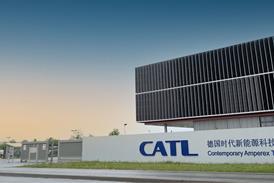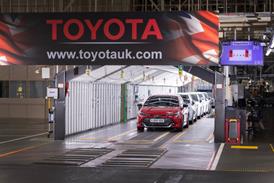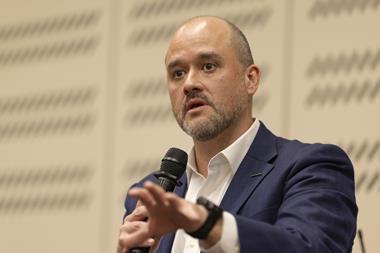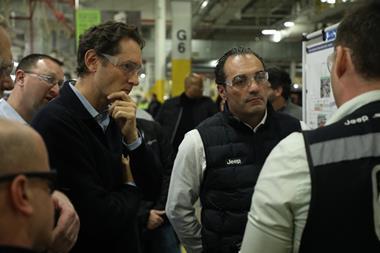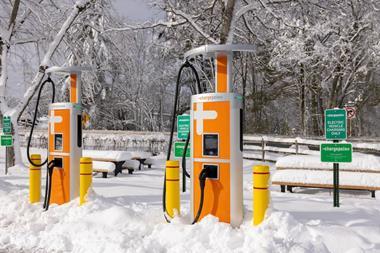
The shipping and logistics group DFDS is aiming to buck the trend of weak vehicle sales in Europe this year with a growth target of more than 30% for shipping passenger cars compared to 2010. The group, which includes DFDS Seaways and DFDS Logistics, is also targeting expansion for inbound automotive logistics, including both trailers as well as specialised services.
According to Peter Kleberg, head and director of DFDS Autologistics, DFDS Seaways handled a record 352,000 vehicles in 2010, including the combined volumes from the Channel ferry operator, Norfolk Lines, which the company purchased in 2010. In 2008, before the downturn and the acquisition, the company handled 250,000 cars on 160 sailings per week, compared to 320 sailings now. Kleberg said that a target of 460,000 vehicles is attainable for 2011.
Last year’s figures would include a small amount of vehicles shipped on the DFDS routes from Dublin, Ireland to Birkenhead and Heysham in Britain, which the company closed in January.
“Much of our growth is coming from automotive areas and it is German exports as well as English vehicles manufactures, also manufacturing and paper exports from Sweden that have benefitted from a relatively weak Kronor,” he told Automotive Logistics News during an interview at DFDS’ offices at the port of Gothenburg.
He added that export of general cargo from the UK was also strong, thanks to the weak pound, allowing for a relatively high utilisation rate for the shipping line moving both east and west. “For the first time ever last year, we had more goods moving from the UK into Sweden than from Sweden into the UK,” he said.
Kleberg pointed to growth picking back up in the Baltic, including on routes to St Petersburg, where DFDS uses a terminal at Petrolesport, as well as to DFDS’ own terminal in Lithuania. However, he acknowledged that the company still had something of a gap in services linking the North Sea ports, such as Gothenburg, to those in the Baltic. Currently the network relies more on transhipment in German ports or by partnering with other shipping lines.
“This is a service that we will develop in the future,” he said. “We are currently working on a huge project with two OEMs in this regards.”
Kleberg also indicated that the company would make further acquisitions to increase its network, although he did not specify companies or regions. “But more will happen,” he said.
A new terminal in Gothenburg
That would be on top of DFDS recent investment at the port of Gothenburg. DFDS, together with Cobelfret, acquired the company Alvsborg Ro-Ro, with DFDS owning 65% and Cobelfret owning 35%. The new company will take over a 25-year lease to operate the ro-ro and short-sea shipping terminal from the Port Authority of Gothenburg. The deal, which is currently pending approval in European courts, will lead to the creation of a joint venture between the two companies, according to Kleberg.
The terminal will make Gothenburg an even more important hub for DFDS. While Immingham in the UK handles the largest volume out of DFDS’ eight terminals, Gothenburg already has strategic importance since it is based next to the shipping line’s largest customer, Volvo Logistics, a 3PL that purchases shipping services on behalf of the Volvo Group, Volvo Cars, Renault, Nissan and others. DFDS moved about 160,000 cars through Gothenburg in 2010, as well as a significant amount of inbound automotive cargo in trailers. It also handles Swedish paper and steel exports here.
“The goal is to use the terminal competence that the Group have in Immingham and to use this in Gothenburg where we will increase value-added services, for both vehicle logistics as well as inbound and other commodities,” he said.
Near to the ro-ro terminal at the port is the car terminal, which receives deep-sea vessels. This terminal is also in the process of being leased out by the port authority, with the bid winner to be announced in the coming weeks. But Kleberg believes that, considering some of the space limits of the deep-sea terminal, and the ability of large vessels to berth in the ro-ro terminal, the DFDS/Cobelfret terminal could eventually compete with the car terminal for some deep-sea deliveries.
“Just as in Immingham, where both short sea and deep sea vessels berth at our terminal, we will invite other other deep sea operaters to consider using our Gothenburg terminal,” he said. “The ro-ro terminal is actually closer to the Volvo car factory, for example, and with our links to Ghent [Volvo Cars’ Belgian factory], there could be significant synergies for consolidating exports in Gothenburg to move to the US or to Russia, for example.”
Looking to build inbound services
Another push for DFDS this year, Kleberg said, is in other segments of the automotive supply chain. A significant amount of cargo that moves on its ships is already trailer loads of automotive material, including a significant flow of material from Volvo Trucks from Gothenburg to its factory in Kaluga, Russia. But DFDS Logistics also performs just-in-sequence services for Volvo in Ghent and Gothenburg, as well as aftermarket services for Honda in Belgium.
“This is a service we believe we can expand,” he said.
How to meet the coming sulphur regulations
Kleberg pointed to several challenges that DFDS and the shipping industry face in the coming years, in particular the pending, UN-binding regulation on sulphur fuel emissions set to come into affect for much of Northern Europe. While most shipping lines in the region are currently using fuel that has about 1.5% sulphur emissions, the regulation will require 0.1% levels by 2015.
Current estimates, according to Kleberg, are that meeting this level would increase bunker prices by up to three times. Meanwhile, the so-called emissions control area (ECA) would cover mainly the North Sea and the Baltic Sea, but not ports in Bergen, Norway, or the Irish Sea. It also excludes the Mediterranean, where sulphur emissions are already much higher than in Northern Europe, according to Kleberg.
With certain ports in Norway unaffected, Kleberg predicted that some supply chain managers would re-design their networks to berth in Spain or increase road freight to avoid the ECA, leading to higher costs and more carbon emissions.
“We are looking into various methods to achieve this sulphur reduction, including the use of a special scrubber to clean the fuel, but it is expensive,” he said. “If the regulations are not adjusted or moved back, the industry will need to have serious discussions around slowing down shipping speeds to save bunker.”
Another potential issue on the shipping side could be capacity levels, where Europe may still face some slack during 2011. However DFDS, thanks in part to its mixed-commodity approach, is running a reasonably balanced network, said Kleberg. The company, which has a fleet of 62 vessels, including 47 ro-ro ships, currently has three ships on order. However there is no timeline as to when these vessels would come into service, and Kleberg believed they would be delayed if the company saw overcapacity in the market.



















